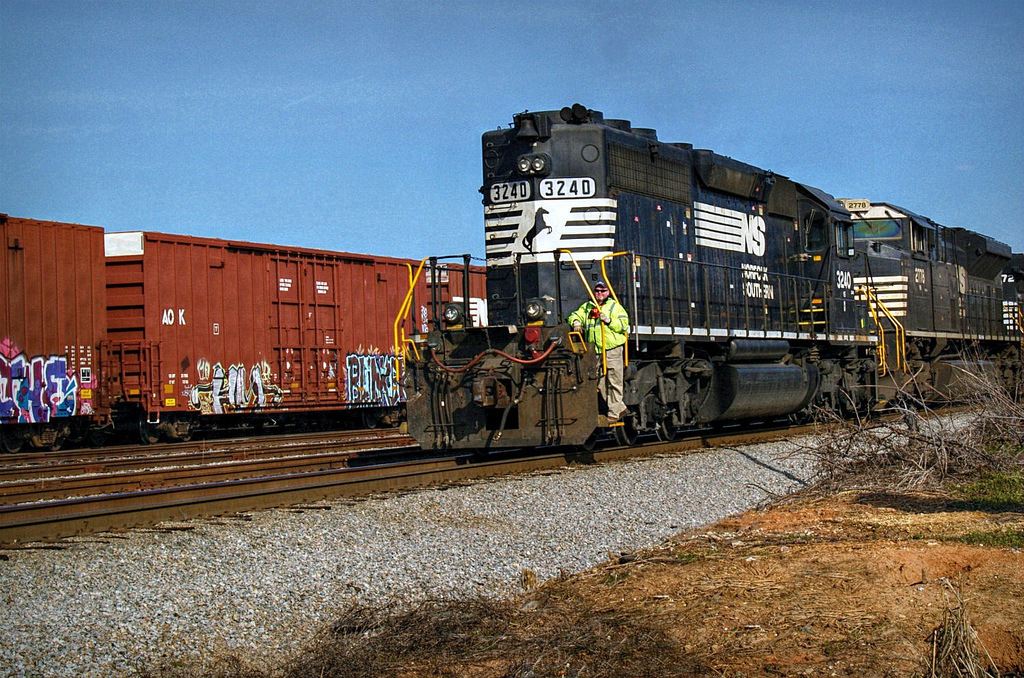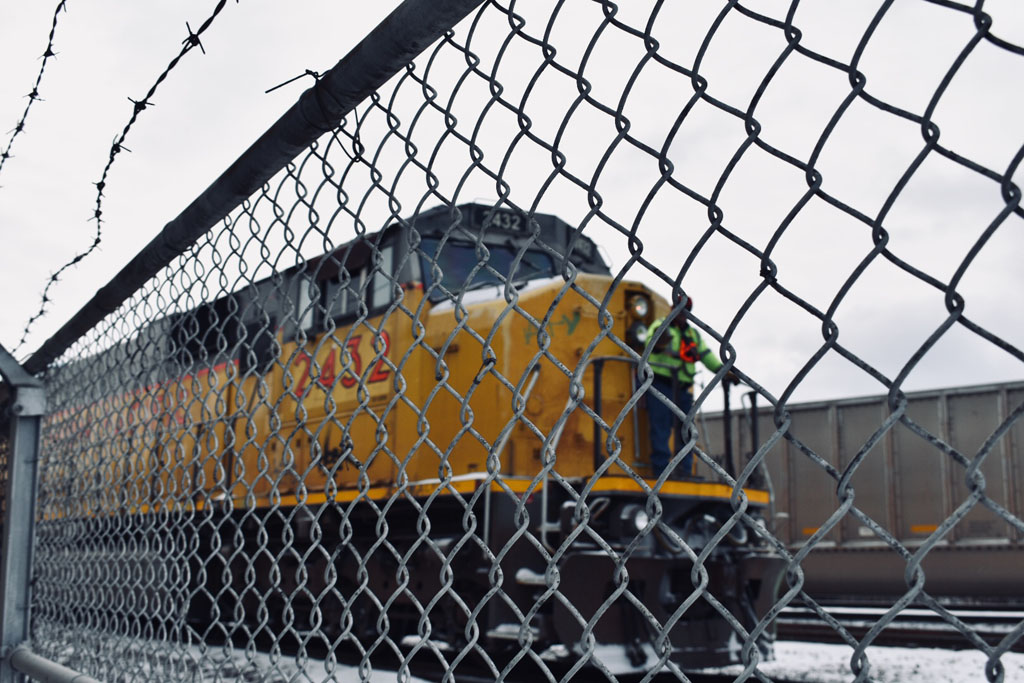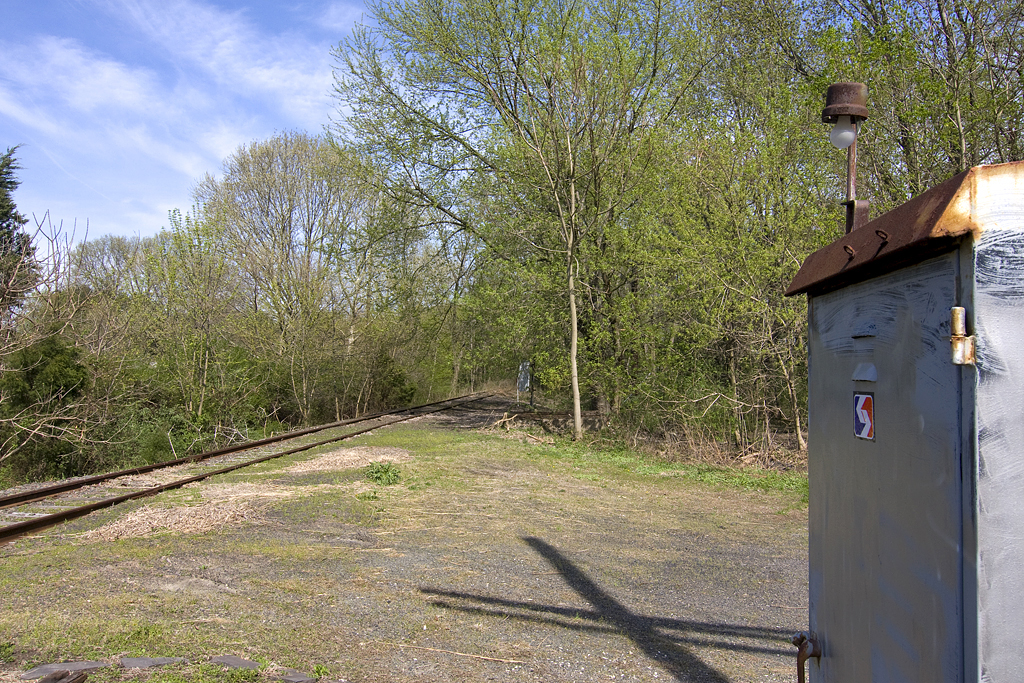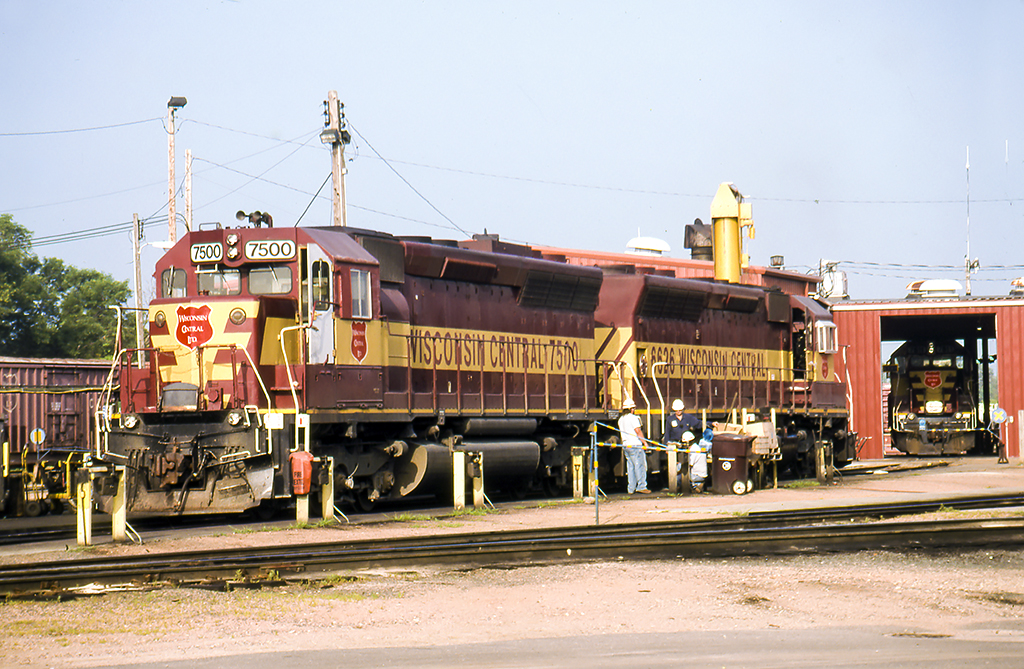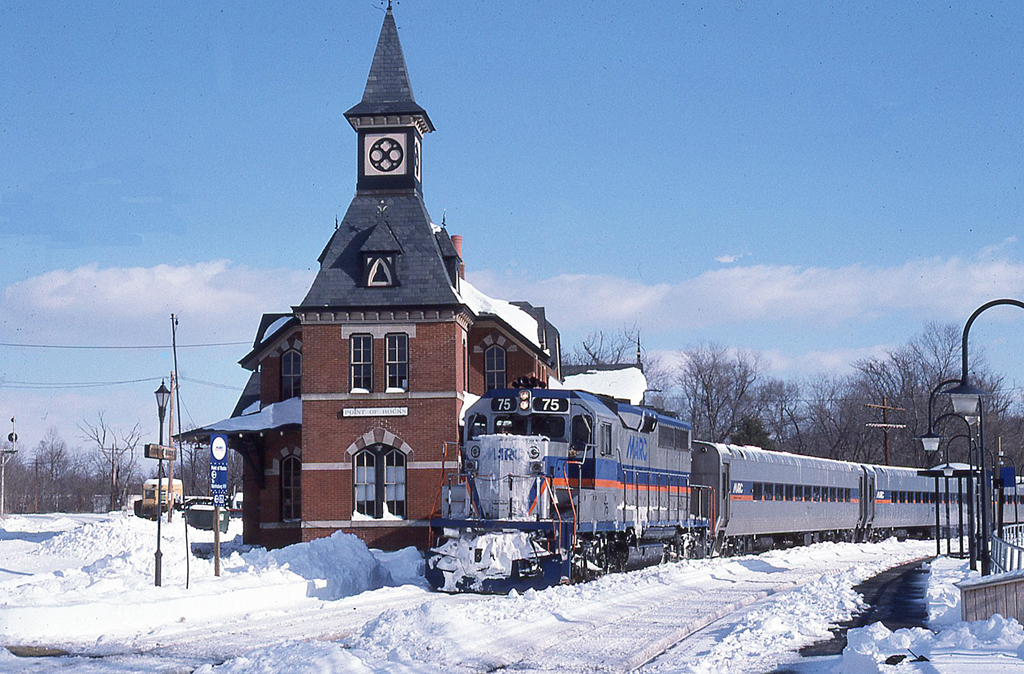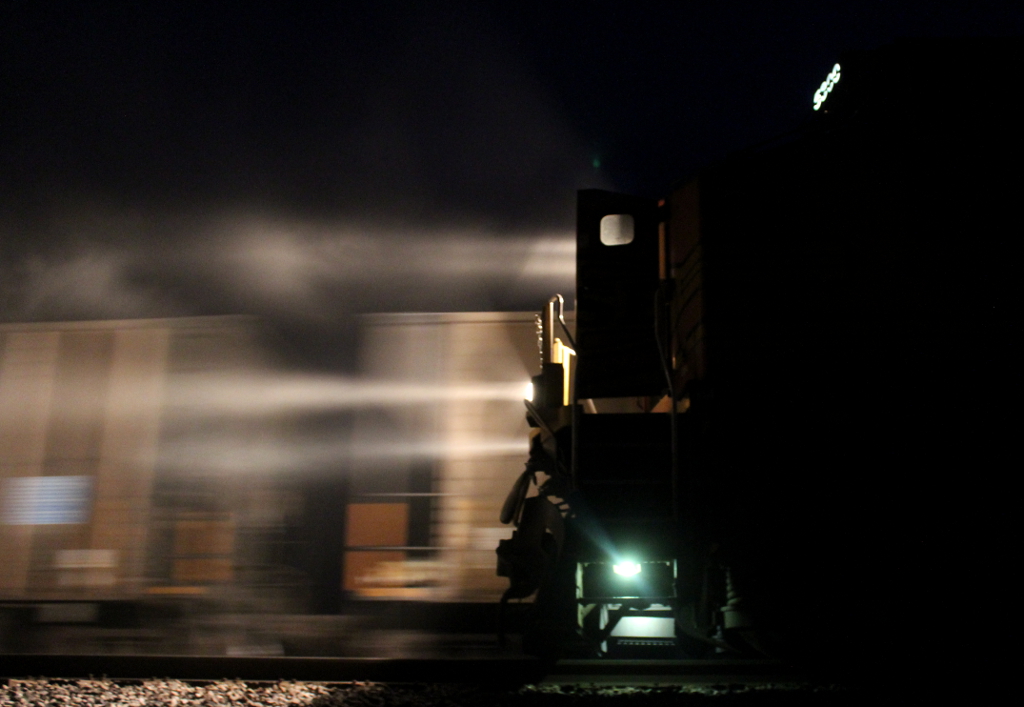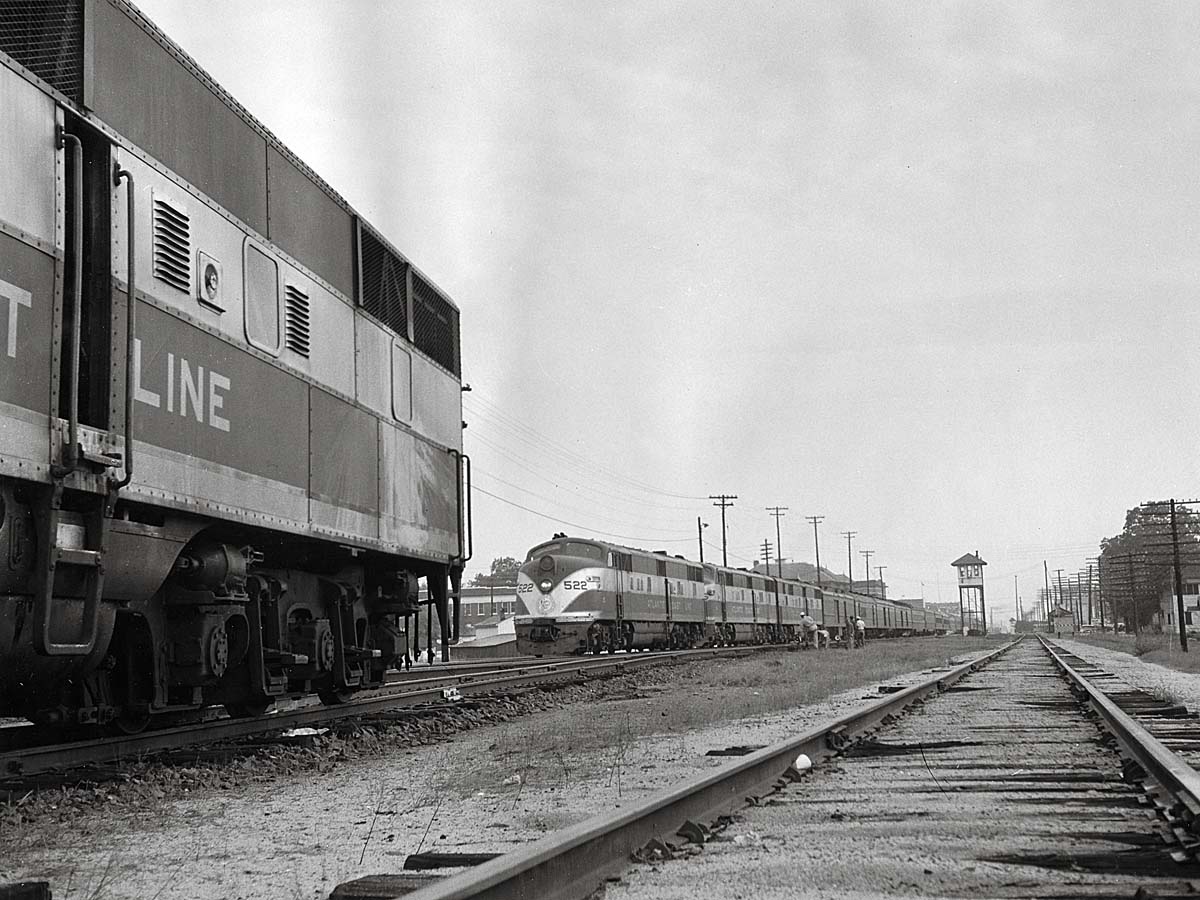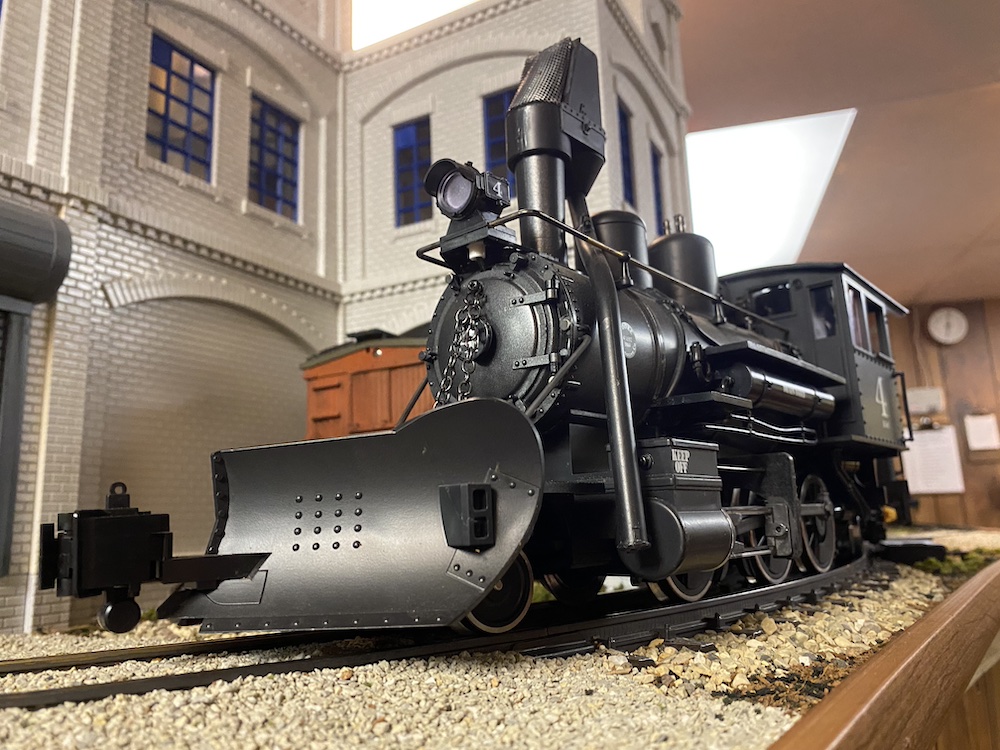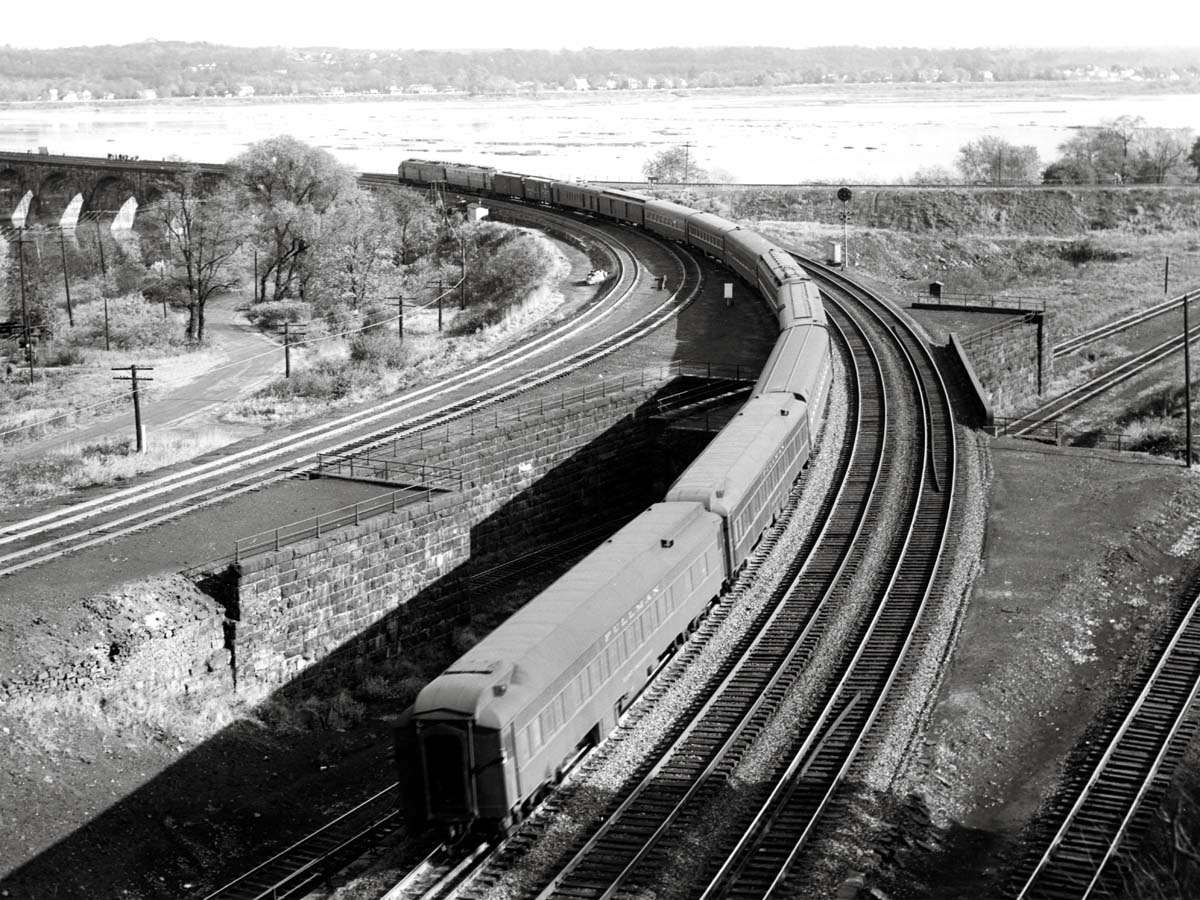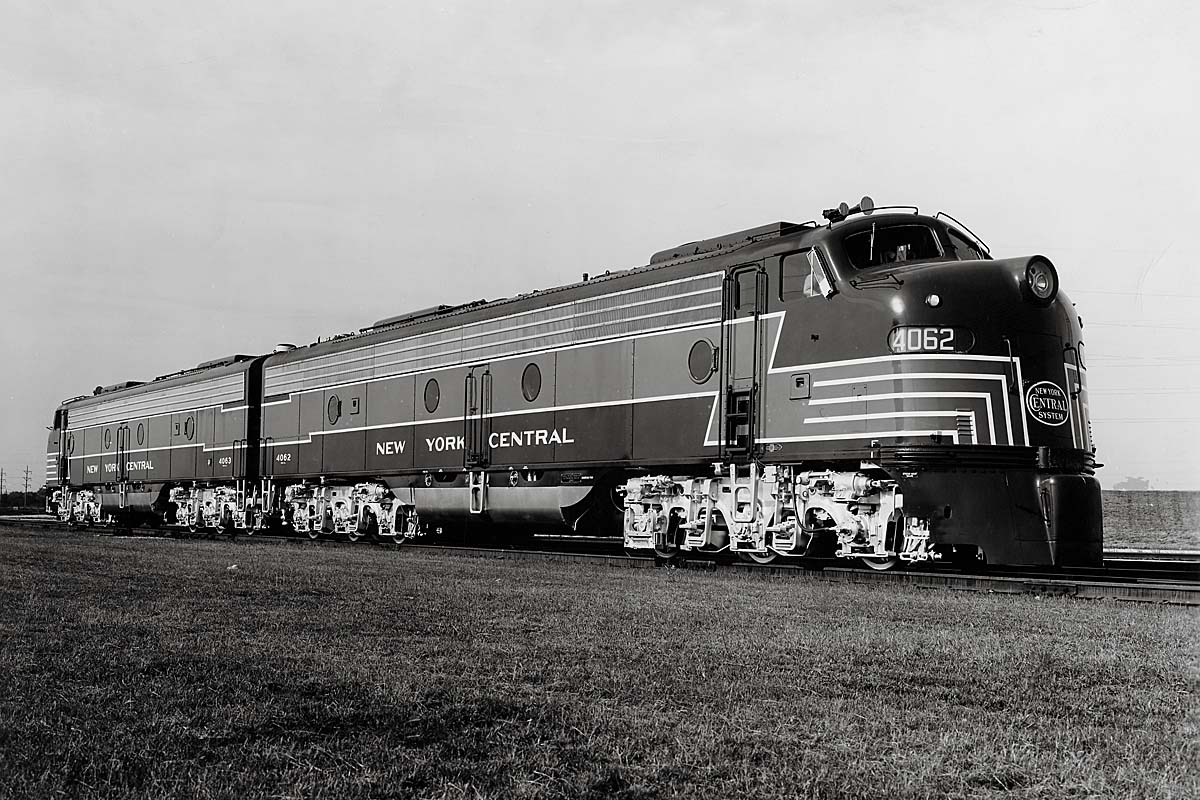
This is what is left of a line once called the "R8 Line" for Philadelphia's SEPTA commuter agency. It is a line that almost became a main line from Philadelphia, Pa., to New York City. The line was chartered as the Philadelphia & Newtown Railroad in 1860 and opened on June 14, 1876, between Newtown, Pa., (just northeast of Trenton, N.J., in Pennsylvania) and Newtown Junction in northeast Philadelphia. Hoping to end a feared monopoly of Philadelphia to New York traffic by the expanding Pennsylvania Railroad, the line was renamed as the Philadelphia, Newtown & New York Railroad in 1873. In 1879 the line failed and came under control of the North Pennsylvania Railroad which, at one point, came under control of the PRR in an effort by the PRR to thwart competition of its monopoly on Philadelphia to NY traffic - gained when it leased, on Dec. 1, 1871, the United New Jersey Railroad & Canal Co. That line included the original Camden & Amboy Railroad from Camden, NJ to South Amboy, N.J. (across Raritan Bay from New York City), as well as a newer line, that ran from Philadelphia to Jersey City, N.J., which was much a much more direct route to New York, via Trenton, N.J. In 1874 the North Pennsylvania Railroad approved the construction of the Delaware River Branch, splitting from the main line at Jenkintown (near Philadelphia) and running to the Delaware River at Yardley, Pa. (near West Trenton, N.J.). With this move, a new route to New York was eminent and the PRR no longer had a need for its line Newtown line and consequently the Reading Co. gained control of both the line and the North Pennsylvania Railroad. In doing so, the Reading gained access to the Delaware & Bound Brook Railroad in 1879. Later, in 1901, the Reading gained a controlling interest in the Central Railroad of New Jersey thereby allowing it to offer seamless rides from Reading Terminal in Philadelphia to the CNJ's Jersey City Communipaw Terminal by way of a new North Pennsylvania Railroad line from Philadelphia to Yardley, Pa. (across the Delaware River in N.J., north of Trenton), and is now part of the SEPTA's "West Trenton Line," which also happens to be CSX's "Trenton Line." Currently, only freight traffic moves east of West Trenton on this line. On Jan. 14, 1983, after 107 years of rail service between Newtown, Pa., and Center City Philadelphia ends due to SEPTA's insistence that traffic does not warrant keeping the line in service. To get "to the point", this is a photo of what remains of a Reading Co. line that was originally chartered to reach a point in New York City from Philadelphia, Pa., to better compete with the PRR.
Photo details:
April 7, 2010
Canon 40D
1/200 sec.
f/13
ISO 200
12-24mm lens
Photograph by Mitch Goldman


Wisconsin Central SD45s have been sent to the Point, Stevens Point, Wis., for maintenance.
Photo details:
July 2001
Nikon N80
Kodachrome
Epson V700 scanner
50mm f/1.2 lens
Photograph by Robert Jordan


WINNING entry
A west bound MARC commuter train slows for the stop at the historic Baltimore & Ohio station at Point of Rocks, Md., following the “Blizzard of 1996.” The massive storm dumped more than 2 feet of snow on the Mid-Atlantic region, bringing train travel to a standstill. MARC service between Washington and Martinsburg, W.Va., resumed within three days. The small community of Point of Rocks is named for the striking rock formation on the adjacent Catoctin Mountain which can be seen only from boats on the adjacent Potomac River. The Point of Rocks station was completed in 1873 and was designed by noted architect E. Francis Baldwin.
Photo details:
Jan. 13, 1996
Canon T90
1/500 sec.
f/8
Fuji Provia 100F slide film
Canon 50mm lens
Photograph by Alex Mayes


The point of a solid manganese self-guarded frog is to move the flanged wheel from one rail to another without the use of guard rails typically seen on the inside of the outer most rails. It is typically seen in yards and industries where the speed is 30 mph or slower. And just like the amphibious frog, it doesn’t mind wet conditions either like those seen here at Pueblo, Colo., in 2016.
Photo details:
July 8, 2016
Nikon D90
1/800 sec.
f/9
ISO 200
Nikon 18-200mm lens
Photograph by Frank Orona


On a chilly night, an empty coal train rolls into the siding in Seymour passed a loaded coal train as it holds the main. The headlights of the locomotive on the point reveal large amounts of dust being kicked up by the empty as its rolls steadily by.
Photo details:
Jan. 26, 2018
Canon EOS Rebel T5
1/13 sec.
f/3.5
ISO 3200
Canon 18-55mm lens
Photograph by Spencer T. Whitman

